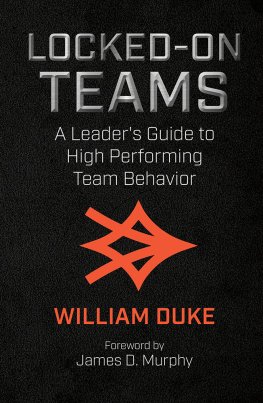Book Presentation:
How Nasa Builds Teams
by Charles J. Pellerin
Book Abstract
MAIN IDEA
Every successful organization needs high performance teams in order to compete and succeed. Yet the technical people who often make up these teams dont generally respond well to the traditional touchy-feel style of team building activities theyre not the kind of people who like sitting around campfires in the middle of nowhere singing Koombiya and toasting marshmallows. If youre trying to build a team of scientists and engineers, a different approach is needed.
NASA recognized this problem in the early-1990s. The catalyst for this was the launch of the Hubble Space Telescope in 1990 with a flawed mirror. In the aftermath of this very public debacle, NASA formed another team to mount a space repair mission which was ultimately highly successful. This second team used the 4-D Team Building Process shown at right.

In 2001, NASA extended the 4-D System right across the board. As of late-2009, more than 500 NASA project and engineering teams involving more than 2,700 scientists have used this process. The results have been impressive with most teams moving from below-average performance levels to consistent above-average performance.
It makes sense to learn from NASAs mistakes and its successes in equal measure. Integrate the 4-D System into the way you build and manage teams.
About the Author
CHARLES PELLERIN is the former director of NASAs Astrophysics Division where he was responsible for one of the largest scientific programs in history with an annual budget of $750 million. Dr. Pellerin, a graduate of Drexel University and Catholic University of America, holds a PhD in astrophysics and has served previously as professor of leadership in the University of Colorado at Boulders business school. In addition to being involved in the launch of more than a dozen satellites, Dr. Pellerin led the team which successfully repaired the Hubble Space Telescope when it was discovered in 1990 the Hubble had been launched with a flawed mirror. Dr. Pellerin was appointed Associate Deputy Administrator of NASA (the highest non-political level in the government) and has been awarded two Outstanding Leadership Medals by NASA, an honor bestowed on less than 50 people (including astronauts) during NASAs history. Dr. Pellerin left NASA to teach and then to form his own leadership consulting firm.
The Web site for this book is at www.4-dsystems.com .
Important Note About This Ebook
This is a summary and not a critique or a review of the book. It does not offer judgment or opinion on the content of the book. This summary may not be organized chapter-wise but is an overview of the main ideas, viewpoints and arguments from the book as a whole. This means that the organization of this summary is not a representation of the book.
Summary of How Nasa Builds Teams (Charles J. Pellerin)
1. The basics of the 4-D system
The 4-D system simplifies leadership into the four dimensions you must address and balance to be an effective leader:
- Cultivating you have to make everyone feel appreciated.
- Including you must make peoples opinions count.
- Visioning you have to think about possible futures.
- Directing you have to take action to make things happen.
Not only can 4-D be used to build good leaders but it is also a solid team-building process. It measures the key driver of team performance the social context.
I am convinced that half the cost of a project is socially determined.
John Mather, NASA Nobel Laureate in physics
The Hubble Space Telescope cost NASA 15 years of work and $1.7 billion of taxpayer money to put into space in 1980. Yet it wasnt until the Hubble was in orbit that it was discovered the telescopes mirror had a spherical aberration making it unable to be used for what it had been designed for in the first place. When a Failure Review Board analyzed how this problem arose, it was determined the aberration was caused by a misadjusted null corrector manufactured by a contractor. What was worse, however, was there had been hints of the mirror flaw in some tests but smart technical people have not pursued these hints rigorously enough to uncover the underlying problem.
This illustrated the point technical workers often focus so intensively on the task at hand they fail to notice or manage the larger social context within which their technology is required to operate. This is the mental equivalent of concentrating so hard on climbing the ladder nobody has stopped to ponder whether the ladder is standing by the right wall. Social context always plays a large role in how projects turn out:
- In one well-known study by Wilson and Kelling in 1982, they showed crime increases in rental buildings in New York when no one repairs broken windows. Unrepaired windows create a context where people assume nobody cares and therefore crime increases. This led to a massive experiment where crime on New York subways was lowered by removing graffiti and arresting fare jumpers.
- Many of the best and brightest people who serve as project heads at NASA and other aerospace industry projects have authority over multi-billion-dollar budgets and yet expect top management to fire them within two years or less. They believe cost overruns are inevitable and when they have to make those cost overruns known, they will be fired for what they are reporting.
- In the Hubble case, it was found NASA program managers openly criticized and pressured the contractors to meet tight delivery and cost budgets. As a result, the contractors felt they could not report delays or problems in what they were working on. They therefore responded by using guerilla tactics including withholding troubling information. This ultimately led the review board to conclude the problem with the Hubble Space Telescope was a failure of leadership more than anything else.
In order for context to be understood, measured and therefore managed better, a simple tool was required which could be used to analyze the performance of teams and leaders.
The 4-D system uses an X-Y coordinate system to simplify teams and leaders in this way:

By combining this X-axis and Y-axis together, you come up with a two-by-two matrix which represents the four core elements or dimensions of leaders and high performance teams:

The four dimensions are:
Cultivating (emotional, intuited) embraces deep feelings for an idealized world. Actions in this dimension are concerned with addressing the interests of others and making them feel understood and appreciated.
Including (emotional, sensed) is about building relationships with others. Actions in this dimension focuses on making others feel like they are part of a team and injecting integrity by ensuring everyone keeps their commitments.











